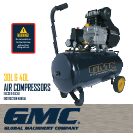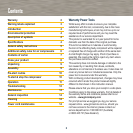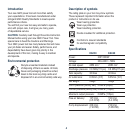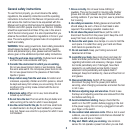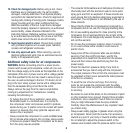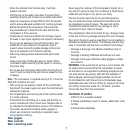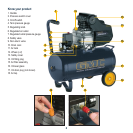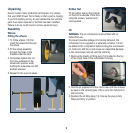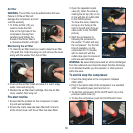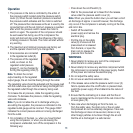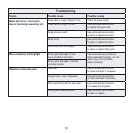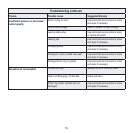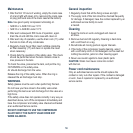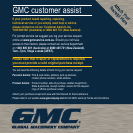
11
Operation
1. The pressure in the tank is controlled by the action of
the pressure switch located under the pressure switch
cover (2). When the set maximum pressure is reached
the pressure switch activates and the motor is switched
off. The pressure then decreases as the air is used by the
connected tool until the set minimum pressure is reached
after which the pressure switch causes the motor to
switch on again. The operator of the compressor should
be well aware that during use of the compressor the
motor will start and stop under the influence of the rising
or falling pressure in the tank. The motor will start without
any warning.
2. The maximum and minimum pressures are factory set
and the operator should not try to change them.
3. All accessories are connected
to the regulated air outlet (6).
4. The pressure of the regulated
outlet, as shown on the
regulated outlet pressure
gauge (7), can be changed by
turning the regulating knob (5).
Note. To obtain the correct
output reading on the regulated
output gauge, the air must be flowing through the outlet.
The regulating valve should be adjusted and the gauge read
with the outlet valve open and the air being discharged from
the regulated outlet through the accessory being used.
To increase the air pressure, rotate the regulating valve
clockwise. To decrease the pressure, rotate the regulating
valve anti-clockwise.
Note. If you do not allow the air to discharge while you
are setting the regulator, the pressure as indicated on the
regulated outlet gauge will be incorrect. This gauge ONLY
indicates the correct pressure while air is being discharged
from the outlet.
5. On completion of the task, i.e. when you have finished
using the compressor, or when you are leaving the
compressor unattended, turn off the compressor in the
following way:
• Press down the on/off switch (3).
• Wait for the pressurised air to bleed from the release
valve under the pressure switch cover (2).
Note. When you press the button down you will hear a short
air discharge of approx ½ second however, this discharge
only occurs if the compressor is actually running at the time,
and not in idle.
• Switch off the electrical
power supply and remove the
electrical plug.
• Pull the ring on the safety
valve (8) to ensure all the
pressurised air is released
from the tank, or open the
drain cock to release the
pressure from the tank.
WARNINGS.
1. Never attempt to remove any part of the compressor
whilst the tank is under pressure.
2. Never attempt to remove any electrical component whilst
the compressor is connected to the power supply. Switch
off the power and remove the electrical plug.
3. Do not adjust the safety valve.
4. Do not use an electrical extension cable.
5. If the release valve under the pressure switch cover (2)
fails to operate when the on/off button is pressed down,
switch the power supply off and determine the nature of
the fault.
6. Ensure that the lubricating oil is clean and that the oil
level is maintained at the mid point of the red circle in the
oil level glass (16).
7. Take care when discharging air from the tank, i.e.
from the safety valve, the drain cock or the air outlet.
Compressed air can be extremely dangerous. Take care
the discharge air does not cause dust, stones or any
other foreign particles to be blown through the air and
that the air is discharged in a safe manner.



